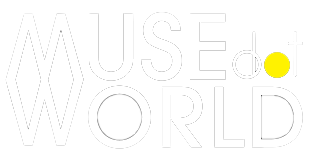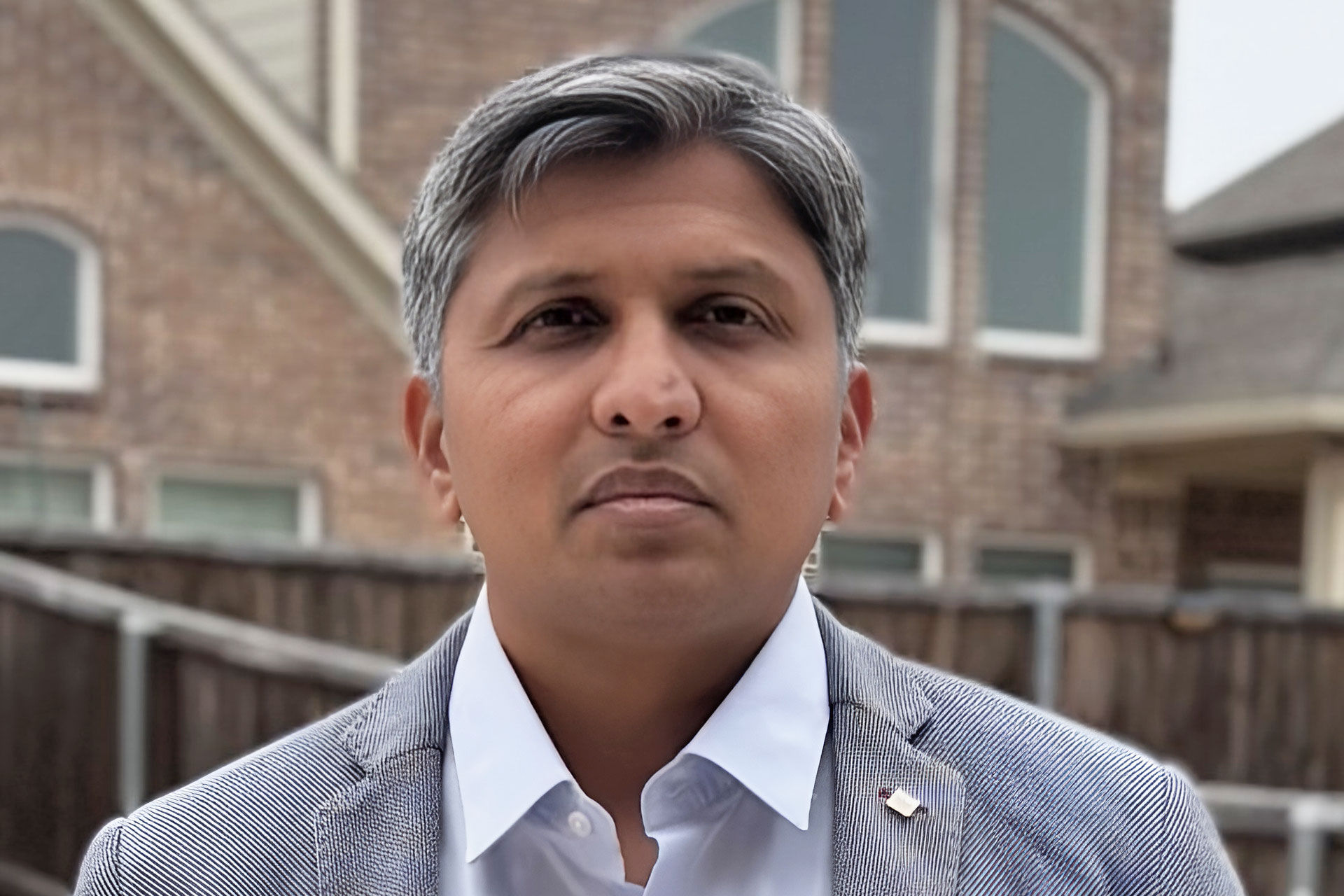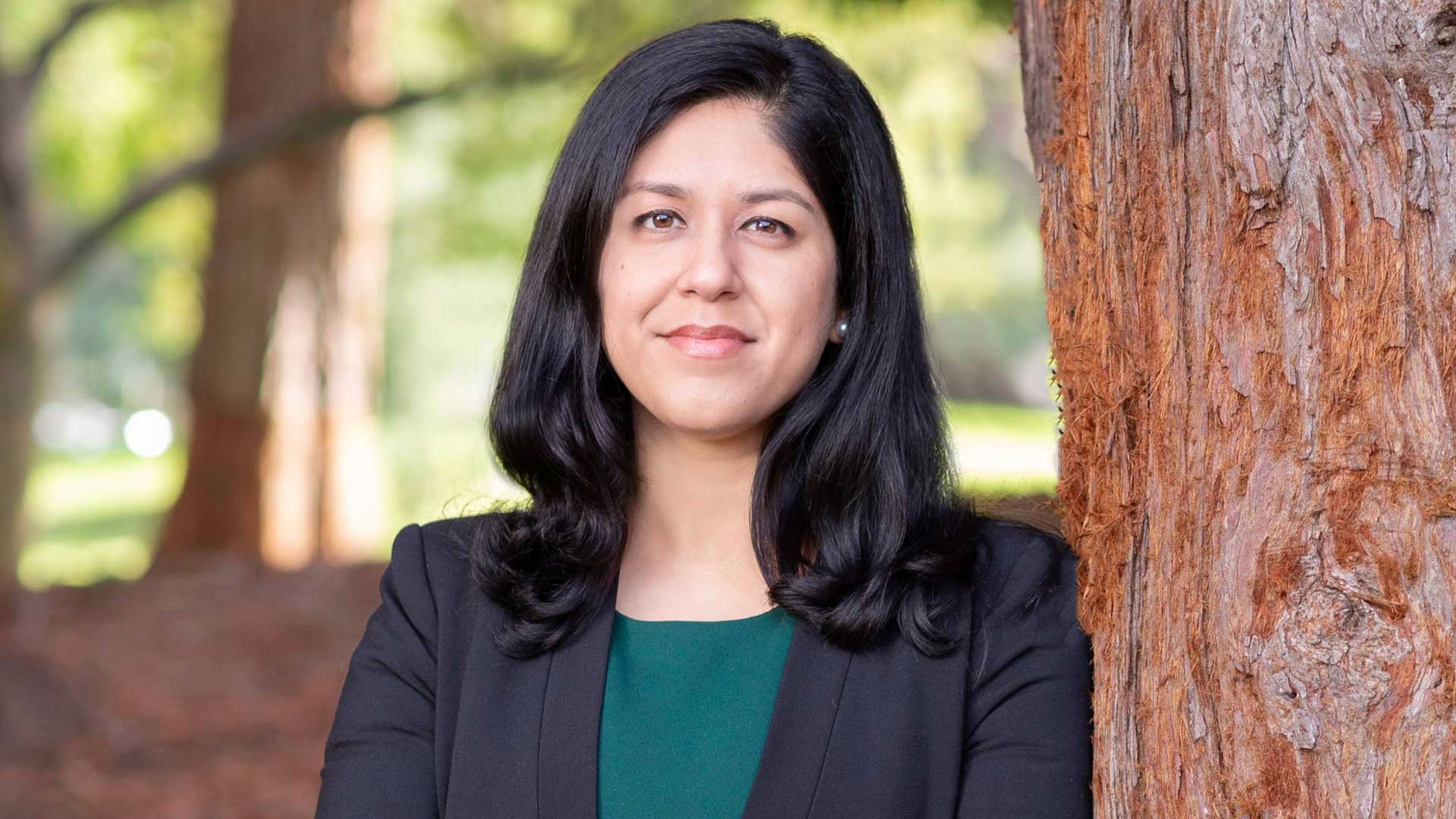What Keeps Innovation Alive? Insights from Indravadan Patel

17 Years on the Tracks: Sourav Kumar Talks Rail, Innovation & Leadership
April 14, 2025
Breaking Down Barriers in RegTech with Shobhan Banoth
April 14, 2025Indravadan Patel
Indravadan Patel brings over two decades of experience in IT, specializing in software architecture, secure system integration, and emerging technologies including cloud, AI/ML, and cybersecurity. He is also an active mentor, judge, and IEEE Senior Member, committed to advancing innovation and knowledge-sharing across the tech community.
I truly appreciate the recognition from the TITAN Innovation Awards—it's an honor to be part of such a prestigious platform that celebrates creativity and forward-thinking in technology.
A bit about me: I'm Indravadan Patel. I have close to 21 years of experience in the IT industry, with a strong foundation in software architecture, secure system integration, and project leadership. Over the years, I've contributed to a variety of complex projects across cloud computing, data engineering, cybersecurity, and AI/ML with Ontology, often driving innovation through secure system design and automation.
In addition to my professional role, I’m actively involved in mentorship and judging, offering my insights to platforms like Globee® Awards, SWE, and DECA, and I volunteer in the IEEE Tech Community as a Senior Member. I also contribute to the community through blog writing, technical interviews, and presentations, aiming to inspire continuous learning and knowledge sharing.
The recent TITAN recognition, alongside awards like Best Use of Technology and the Global Recognition Award, fuels my passion to keep pushing boundaries and leading with innovation.
Great question! The motivation behind my submission to the TITAN Innovation Awards was The motivation behind my submission to the TITAN Innovation Awards stemmed from a clear and pressing need to address complex challenges in model risk management, data reconciliation, and secure system integration within highly regulated industries.
I spearheaded the design and development of an advanced reconciliation testing tool, specifically created to support Model Risk Management (MRM) processes and to fulfill Federal Housing Finance Agency (FHFA) audit remediation requirements. This initiative leveraged modern technologies—including cloud-native architecture, and intelligent automation—to deliver a scalable, compliant, and high-performance solution.
This achievement closely aligned with both my professional vision and organizational objectives:
• On a personal level, I am deeply committed to delivering innovative, high-impact solutions that solve real-world problems and advance the responsible use of emerging technologies.
• At the organizational level, the project directly supported strategic goals by enhancing data accuracy, ensuring regulatory compliance, reducing operational risks, and improving efficiency and transparency in decision-making.
Additionally, the project offered an opportunity to demonstrate technical leadership, foster collaboration across cross-functional teams, and mentor others throughout the development lifecycle. Ultimately, the submission represented a confluence of technological innovation, regulatory alignment, and enterprise value creation, reflecting both individual and collective success.
The award-winning entry introduced a series of technological advancements and unique solutions that addressed critical challenges in model risk management, data reconciliation, and system integration. At the core of the solution was an intelligent reconciliation testing framework, purpose-built to automate and validate large-scale datasets across systems. This innovation ensured data consistency, traceability, and compliance with Federal Housing Finance Agency (FHFA) audit remediation requirements.
Specifically designed to support Model Risk Management (MRM) processes, it enabled the precise identification of data discrepancies and incorporated detailed audit trails to enhance transparency.
The architecture delivered the scalability and reliability required to manage high-volume data operations while maintaining cost efficiency and operational agility. It effectively identified subtle data variances that traditional rule-based approaches often overlooked, providing predictive insights and enabling early detection of compliance risks.
Despite its technical complexity, the solution maintained a user-centric focus, incorporating an automated reporting tool to facilitate seamless collaboration among development, compliance, and business teams. It significantly reduced manual reconciliation efforts and improved operational efficiency by over 70%, generating measurable business value.Overall, this innovation successfully combined advanced technology with regulatory awareness and strategic business alignment. It demonstrated how intelligent systems can be designed using cutting-edge technologies to address real-world challenges and drive enterprise-wide transformation. The project delivered both technical excellence and strategic impact, distinguishing it as a standout submission in the TITAN Innovation Awards.
My expertise and leadership played a pivotal role in the success of this project, guiding it from concept to implementation with a clear focus on innovation, compliance, and business impact.
Drawing on over two decades of experience in software design, system integration, and risk management, I led the end-to-end design and development of the reconciliation testing framework. I identified the technical gaps and regulatory requirements early on and translated them into a scalable, secure, and efficient solution.
My in-depth understanding of Model Risk Management (MRM) and the Federal Housing Finance Agency (FHFA) audit expectations enabled the team to align the solution precisely with compliance mandates.
As the project lead, I facilitated cross-functional collaboration among the stakeholders. I provided strategic direction, defined development standards, and ensured architectural consistency across all components.
In addition to technical oversight, I mentored team members, streamlined delivery processes, and led key presentations to stakeholders, securing alignment and support throughout the project lifecycle. My commitment to excellence, attention to detail, and ability to bridge business needs with technical solutions were critical to delivering a system that not only met but exceeded expectations.
This leadership-driven approach ensured that the project delivered measurable results, strengthened regulatory posture, and ultimately contributed to the recognition received through the TITAN Innovation Awards.
The innovation directly addresses a critical problem in Model Risk Management (MRM): the lack of an automated, accurate, and scalable process for reconciling complex datasets within the system — particularly in highly regulated environments.
Traditionally, data reconciliation was manual, time-consuming, and prone to human error. These legacy processes not only increased operational risk but also made it difficult to meet stringent audit and compliance requirements set by agencies such as the Federal Housing Finance Agency (FHFA).
My solution introduces an intelligent reconciliation testing framework that automates the validation of large-scale datasets, ensuring data consistency, traceability, and transparency. It enables precise identification of discrepancies between systems, integrates audit trails for accountability, and provides real-time insights through predictive analytics.
This innovation significantly improves existing processes by reducing manual reconciliation efforts by over 70%, enhancing the speed and accuracy of data validation, and enabling teams to respond proactively to potential compliance risks. It transforms a traditionally reactive process into a proactive, intelligent, and efficient operation, supporting both regulatory compliance and strategic business objectives.
Certainly. The innovation stands out due to a combination of technological sophistication, regulatory alignment, and business impact. Several key features distinguish it from traditional solutions:
First and foremost is the intelligent reconciliation testing framework, purpose-built to automate and validate complex datasets across systems. Unlike conventional manual processes, this framework ensures data consistency, traceability, and full auditability—meeting the stringent requirements of Model Risk Management (MRM) and Federal Housing Finance Agency (FHFA) audit remediation.
The innovation is marked by its user-centric design. Despite its technical complexity, it offers intuitive interfaces and automated reporting tools, enabling seamless collaboration across development, business, and compliance teams. This results in a significant reduction in manual efforts—by more than 70%—and measurable improvements in operational efficiency.
Together, these features position the solution as a comprehensive, forward-looking platform that not only solves a critical industry challenge but also sets a new standard for intelligent, and scalable data reconciliation.
During the development phase, one of the primary challenges was designing a solution that could handle complex, high-volume data reconciliation while meeting strict regulatory and audit requirements. Balancing technical scalability, data accuracy, and regulatory compliance was not straightforward, particularly when integrating with legacy systems and aligning multiple stakeholder expectations.
Another significant challenge was managing cross-functional collaboration. The project required seamless coordination between development teams, business analysts, compliance officers, and infrastructure specialists—each with different priorities and technical backgrounds. Aligning their goals, timelines, and deliverables demanded clear communication, strong leadership, and a shared vision.
My ability to lead with both a technical and strategic mindset played a key role in overcoming these challenges. Drawing from my experience in software architecture, and risk management, I was able to design a robust framework that addressed the core problem while ensuring performance, security, and adaptability. I took a proactive approach to identify potential risks early, facilitated architecture discussions, and ensured that the implementation was modular and scalable.
Additionally, my interpersonal and mentorship skills helped foster a collaborative and productive environment. I made it a priority to bridge communication gaps between technical and non-technical teams, translating complex requirements into actionable tasks. I also conducted knowledge-sharing sessions to align the team on compliance needs and system design best practices.
By staying focused, adaptable, and solution-oriented, I was able to guide the team through technical roadblocks and process challenges—ultimately delivering a high-impact solution that exceeded expectations and earned recognition through the TITAN Innovation Awards.
I hope that my innovation will have a transformative impact on the Model Risk Management (MRM) and data reconciliation processes within the financial services and regulated industries. By providing a scalable, and automated solution, I aim to address longstanding challenges in these sectors, especially around the accuracy, efficiency, and compliance of data handling.
One of the core impacts I expect is a reduction in operational risks related to manual errors, inefficiencies, and compliance failures. The intelligent reconciliation framework will help organizations identify discrepancies proactively, ensuring data integrity across complex systems and streamlining audit processes. This level of automation and precision can significantly reduce the burden on financial institutions and regulatory bodies, enhancing their ability to focus on strategic initiatives rather than manually correcting data discrepancies.
For the industry at large, I hope this innovation will serve as a benchmark for future developments in automated reconciliation and intelligent compliance monitoring, encouraging broader adoption of similar technologies across different sectors. By showcasing the benefits of integrating advanced technology into regulated processes, I aim to inspire more organizations to embrace digital transformation in ways that optimize both operational workflows and compliance.
Ultimately, the broader goal is to elevate industry standards for secure, intelligent, and efficient risk management practices, helping organizations navigate complex data challenges while driving innovation and growth in the process.
Winning the TITAN Innovation Awards is a significant affirmation of my vision for technological progress and innovation, particularly in how emerging technologies can be applied to solve complex, real-world problems in regulated industries. The award reflects my belief that intelligent, scalable solutions can transform traditional processes, improve operational efficiency, and ensure compliance—all while driving business growth and data integrity.
The core of my vision revolves around harnessing advanced technologies—such as AI/ML, cloud-native architectures, and secure system integration—to create smart solutions that not only meet current needs but also anticipate future challenges. By automating complex tasks like data reconciliation and leveraging machine learning for anomaly detection, the solution exemplifies how innovation can bring both technical excellence and practical impact to the forefront of enterprise operations.
Winning this award also highlights my commitment to pushing the boundaries of regulatory technology and data governance. It reinforces my belief that technological progress is not just about creating cutting-edge systems, but also about aligning innovation with real-world regulatory frameworks to create responsible, sustainable solutions.
Ultimately, this recognition validates the direction I’ve taken in advocating for technologies that deliver measurable outcomes, enhance operational resilience, and provide the scalability needed to support future advancements in the industry.
I see my innovation having a profound impact on the future of the financial services and regulated industries, particularly in how organizations approach data reconciliation, risk management, and compliance. The automation, scalability, and intelligence embedded in this solution set the stage for transforming traditional, labor-intensive processes into more efficient, accurate, and proactive operations.
As the solution is designed to be highly compliant, it establishes a framework for enterprise-level governance that can be applied across different sectors, not just in finance. The broader data governance principles embodied in this solution will influence how businesses in various industries approach secure, transparent, and compliant data management, ultimately leading to industry-wide shifts in how organizations approach regulatory requirements.
Looking further ahead, I believe this innovation will encourage more widespread adoption of automation in highly regulated industries, paving the way for smarter systems that are both efficient and compliant. As businesses increasingly rely on advanced technologies like AI/ML and cloud solutions, my hope is that this work serves as a model for future innovations that not only address current industry challenges but also create foundations for sustainable growth in the future.
In essence, the impact of this innovation will likely ripple throughout the industry, setting new standards for how businesses integrate technology and compliance, while optimizing risk management practices in a rapidly evolving digital landscape.
Several emerging technologies excite me right now, as they are poised to significantly transform industries and influence how we approach problem-solving in the tech and financial sectors.
Artificial Intelligence (AI) and Machine Learning (ML) are at the forefront of my interest. These technologies are not only transforming data analytics but also providing deeper insights into predictive models, anomaly detection, and process automation. In my work, I leverage AI/ML to enhance data reconciliation and risk management.By incorporating machine learning, I can create systems that not only identify discrepancies but also anticipate potential risks, improving operational efficiency and reducing errors.
Another trend that excites me is the rapid evolution of cloud computing, especially serverless architectures. Technologies like AWS Lambda and Google Cloud Functions allow organizations to build highly scalable and cost-efficient systems. I find this particularly impactful in developing cloud-native applications that can seamlessly scale with business demands.
The flexibility, cost-effectiveness, and operational agility cloud solutions offer greatly influence how I design and deploy systems, ensuring that solutions are both scalable and resilient.
Blockchain technology is another area of growing interest. While its most well-known application is in cryptocurrency, the potential of blockchain to ensure data integrity, auditability, and secure transactions is highly relevant in regulated industries. I’m particularly excited about exploring how blockchain can be used for secure data management in compliance-heavy sectors, enhancing transparency and trust in processes like reconciliation and audit trails.
Lastly, edge computing is an emerging technology that I believe will revolutionize data processing. With the growing volume of IoT devices and the need for real-time data analysis, edge computing offers the ability to process data closer to its source. This can be particularly valuable in scenarios where low latency and high performance are critical. I see edge computing complementing cloud infrastructure, offering a more holistic solution to data processing needs.
These technologies influence my work by pushing me to explore more intelligent, scalable, and secure solutions. They enable me to integrate advanced capabilities into my projects, whether that’s through automating processes, enhancing data insights, or ensuring that systems can adapt to evolving business needs.
I am constantly evaluating how these innovations can be leveraged to build smarter, more efficient systems that drive real-world results in areas like data reconciliation, risk management, and regulatory compliance.
For individuals or teams working on transformative ideas, I would offer the following advice:
1. Focus on Solving Real Problems: The most impactful innovations address a specific pain point or challenge. Start by deeply understanding the problem you are solving, and ensure that your solution directly addresses the needs of your stakeholders or customers. It's important to always keep the end user in mind and design solutions that bring measurable value to them.
2. Embrace Cross-Disciplinary Collaboration: Transformative ideas often require diverse expertise. Build a team with a range of skills and perspectives, and encourage open communication. Collaboration across different domains—whether it's business, technology, design, or compliance—leads to more robust, holistic solutions. Don’t hesitate to engage with experts outside your immediate circle to get different viewpoints and innovative ideas.
3. Prioritize Iterative Development: Innovation rarely happens in one giant leap. Break down your project into smaller, manageable phases and iterate regularly. By testing and refining continuously, you can adapt quickly to feedback, address issues early, and improve your solution over time. Agile methodologies work particularly well in this context, allowing flexibility and the ability to pivot when needed.
4. Leverage Emerging Technologies Thoughtfully: Stay informed about emerging technologies, but be discerning about how you apply them. Not every new technology is the right fit for every problem. Choose the tools and technologies that align with your project’s goals and objectives, ensuring they provide real, tangible benefits without introducing unnecessary complexity. Aim to create sustainable, scalable solutions that can evolve.
5. Foster a Culture of Innovation: Encourage creativity and experimentation within your team. A culture of innovation thrives when people feel empowered to think outside the box, make mistakes, and learn from them. Support an environment where new ideas are welcomed, and team members are encouraged to challenge the status quo.
6. Be Resilient and Adaptable: Transformative ideas often face significant challenges, including resistance to change, technical hurdles, or market shifts. Stay resilient in the face of setbacks, and maintain a flexible mindset. Adapt to changing circumstances, learn from failures, and continuously refine your approach. Persistence, combined with the ability to pivot when necessary, is key to long-term success.
7. Keep an Eye on the Bigger Picture: While focusing on the immediate goals and execution, always consider the long-term impact of your innovation. Think about how it fits into the broader ecosystem and how it can evolve to meet future demands. Build with scalability and sustainability in mind, ensuring your solution can grow and adapt as the industry or market changes.
8. Communicate Your Vision Clearly: Whether you’re pitching to stakeholders, working with your team, or engaging with customers, clear communication is vital. Ensure that everyone understands the purpose behind your idea, the problem it solves, and how it will benefit them. Strong communication fosters alignment and helps build momentum for your project.
By following these principles, individuals and teams can increase their chances of creating impactful, transformative innovations that not only solve immediate problems but also pave the way for future advancements.
Winning Entry
ReconTool | TITAN Innovation Awards
Designed and developed sophisticated tools for reconciliation testing, addressing critical Model Risk Management (MRM) requirements and fulfilling Federal Housing Finance Agency (FHFA)... (read more here)
Indravadan Patel
Indravadan Patel brings over two decades of experience in IT, specializing in software architecture, secure system integration, and emerging technologies including cloud, AI/ML, and cybersecurity. He is also an active mentor, judge, and IEEE Senior Member, committed to advancing innovation and knowledge-sharing across the tech community.
Read about the interview 17 Years on the Tracks: Sourav Kumar Talks Rail, Innovation & Leadership here.





